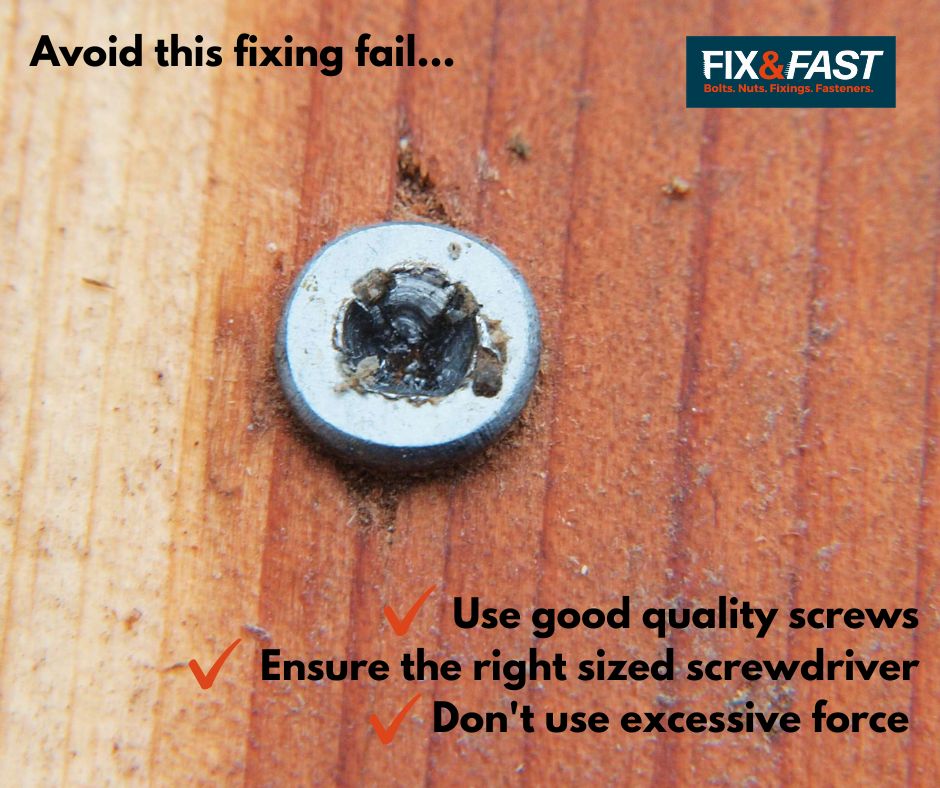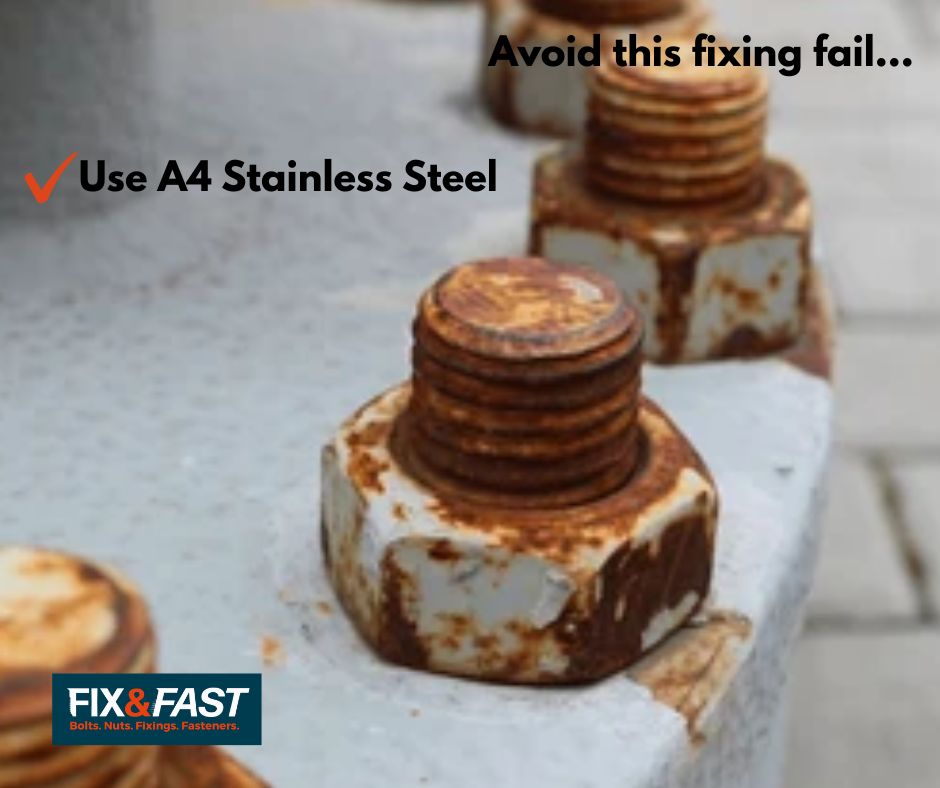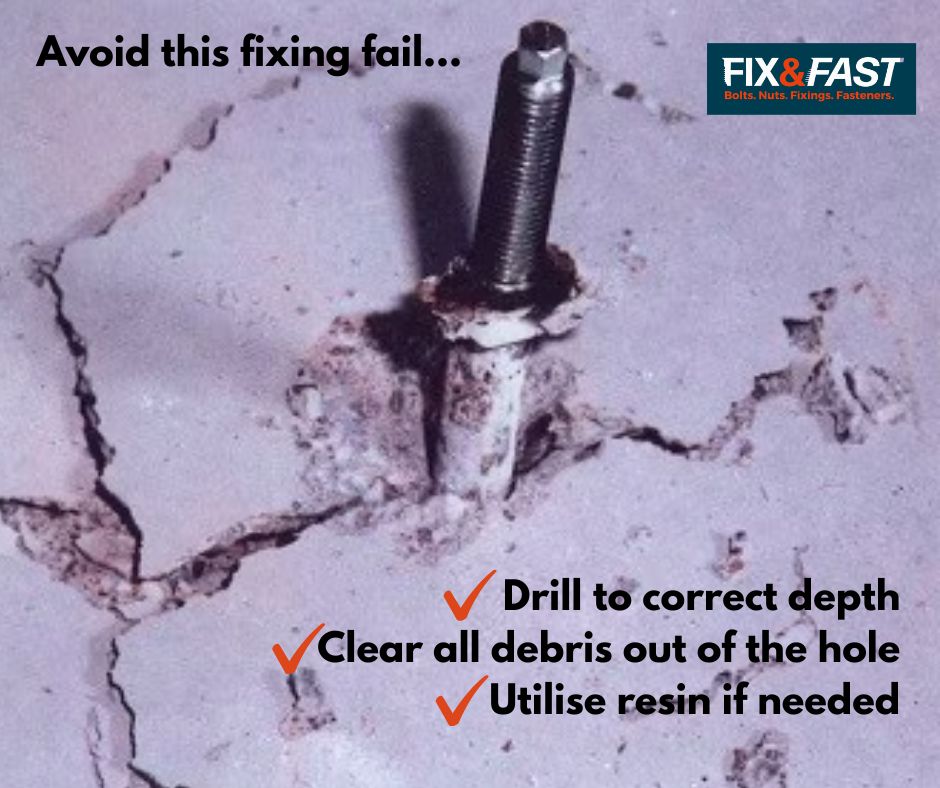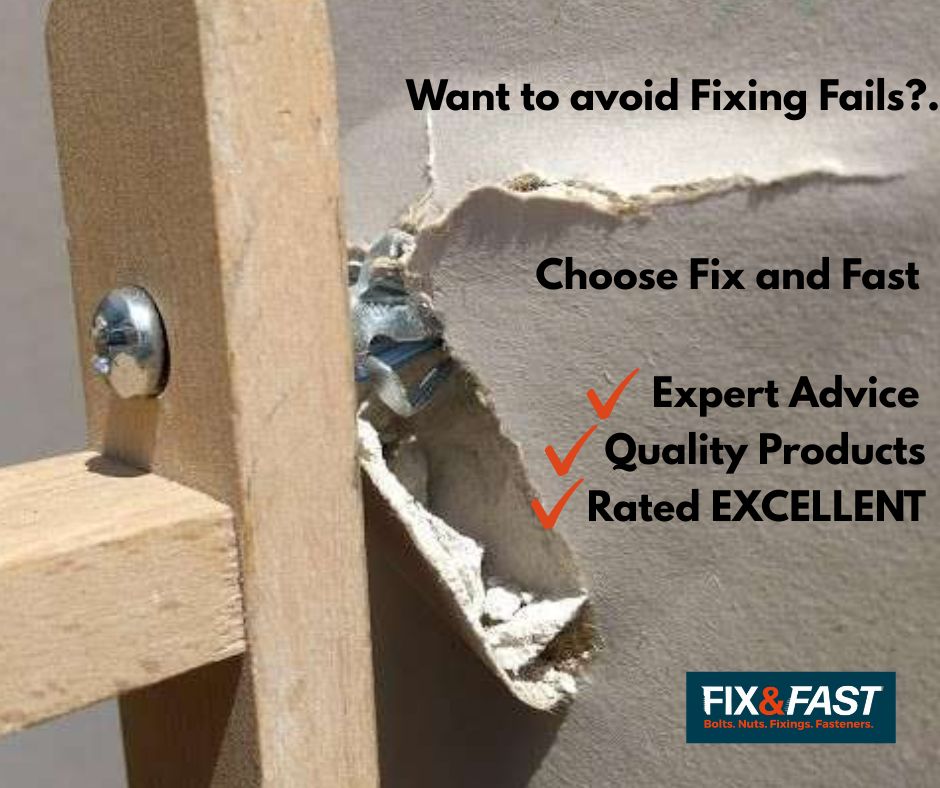Fixings Failures & How to Avoid Them
Fixings Failures and How to Avoid Them
When fixings fail, they don’t just waste time - they cost money and can damage your reputation if you are a business or a tradesperson.
Whether you’re working on site or handling DIY at home, understanding why certain fixings go wrong (and how to prevent it) can save you a lot of hassle. Below, we break down five of the most common fixing failures and give you our expert tips to make sure your installations stay strong and secure.

Stripped Threads & Heads on Woodscrews
The problem:
Overdriving screws into softwood can cause the threads to strip out the timber, leaving the screw loose and ineffective. Using excessive force and incorrect sized tools can also damage the head of a woodscrew, causing it to lose its grooves making it difficult to grip.
Why it happens:
Softwoods like pine or spruce don’t offer much resistance. If you skip drilling a pilot hole or use an oversized screw, the wood fibres can tear out, reducing grip.
How to avoid it:
Always drill a pilot hole that matches the core diameter of the screw. If you're using large screws or working close to edges, consider using a countersink bit as well. For extra holding power, look at twin-thread or deep-thread screws designed for softwood.
To avoid damaging the woodscrew head using the right tools for the job is essential. An incorrectly sized screwdriver can damage the screw head, making it difficult to grip. To prevent stripping, avoid using excessive force and over-tightening, as this can also damage the threads.
Apply steady, controlled pressure rather than forcing the screw. Additionally, the quality of the woodscrews themselves plays a significant role; lower-quality screws are more prone to stripping

Corrosion on Outdoor Fixings
The problem:
Outdoor screws and bolts can rust over time, leading to staining, weakening, and eventual structural failure.
Why it happens:
When fixings aren’t corrosion-resistant, moisture and weather exposure cause rust to form - especially in coastal or damp environments.
How to avoid it:
Use A4 (marine-grade) stainless steel or zinc-coated galvanised fixings for exterior jobs. Products labelled as “external grade” or “anti-corrosion” are built to withstand rain and moisture.
Check your application - decking screws, for example, must be rated for outdoor use to avoid premature failure.

Adhesive Bond Splitting on Vertical Surfaces
The problem:
Adhesives fail to hold heavy items on vertical surfaces, causing them to slip or detach altogether.
Why it happens:
Not all adhesives are suitable for overhead or vertical applications. Some require temporary mechanical support during curing, while others simply can’t hold weight in those positions.
How to avoid it:
Choose a grab adhesive specifically rated for vertical or high-load applications. Hybrid polymers and polyurethane-based adhesives typically offer higher bond strength and initial grab. Also, follow manufacturer instructions for curing times and application thickness. Don’t overload before full cure
Anchor Pullout in Masonry
The problem:
Fixings in concrete or brickwork can suddenly fail, pulling away from the substrate.
Why it happens:
This usually results from insufficient embedment, using the wrong anchor type, or failing to clean the drilled hole. Dust or debris also reduces the anchor’s grip.
How to avoid it:
Drill to the correct depth and always clean the hole with a blower or vacuum. Use frame fixings, resin anchors or sleeve anchors depending on the load and material. Lightweight fixings may suffice for hollow blocks, but for heavy-duty applications in solid masonry, use through-bolts or shield anchors.

Sealant Failure Due to Moisture
The problem:
Silicone sealants can peel, crack or detach from surfaces if the substrate is damp or contaminated at application time.
Why it happens:
Applying silicone to a wet, dusty or oily surface means it won’t bond properly. Some general-purpose silicones also aren’t suitable for high-moisture environments like bathrooms or exterior joints.
How to avoid it:
Always clean and dry the surface thoroughly before applying silicone sealant. Use a high-quality, purpose-designed product like a sanitary silicone for wet areas, or an external-grade hybrid for exposed joints. If sealing joints that may move, choose a product with high flexibility and movement accommodation.
Here are some of the questions we’ve had into us on email and via our informative Tiktok page recently
“Why is my silicone cracking?”
Silicone cracks when exposed to UV light, movement, or if an incorrect type is used. For example, interior-only silicone used outdoors will degrade quickly. Use UV-resistant or flexible silicones in high-movement joints.
“What’s the difference between frame fixings and anchor bolts?”
Frame fixings are lighter-duty and used to fix timber or PVC frames to masonry. Anchor bolts, on the other hand, are heavy-duty and expand under torque, making them ideal for securing structural steel or brackets to concrete.
“Why won’t my screw bite into the wall plug?”
This often happens when the pilot hole is too wide or the wall plug has spun inside the hole. Make sure the drill bit matches the plug size exactly, and that you’re using the correct screw diameter. Avoid overtightening, as this can spin or collapse the plug.
“Can I paint over sealant or adhesive?”
Some silicones and adhesives are not paintable, especially if they’re solvent-based or contain oils. For best results, use a paintable hybrid polymer or acrylic sealant and wait until it’s fully cured. Always check the product label for paint compatibility.

Most fixing failures can be avoided with the right prep and product selection. Always consider:
Surface condition (dry, clean, and compatible)
The environment (indoor/outdoor, load-bearing or decorative)
The material being fixed (wood, masonry, plastic, metal)
At Fix and Fast, we stock a wide range of corrosion-resistant fixings, heavy-duty adhesives, and reliable sealants to help you avoid these common pitfalls. We are backed up with over 80 years of fixing and fastener expertise from FR Scott and are rated EXCELLENT on trustpilot
Need advice on a specific application? Get in touch - we’re happy to help







